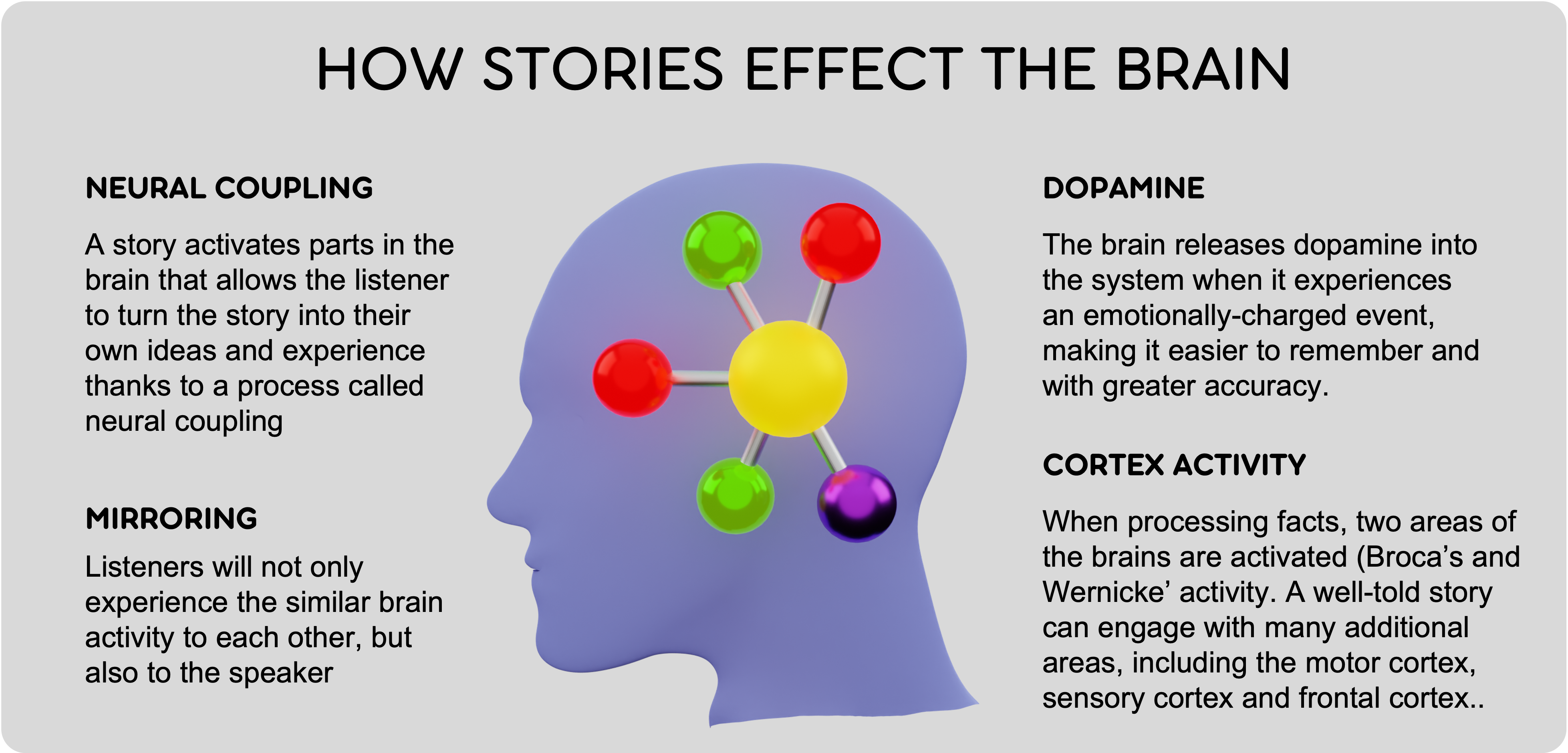
WHY RETAIL STAFF NEED TO
UNDERSTAND THE CUSTOMER JOURNEY
We remember stories, not isolated facts
I’ve had to deal with this more than once before - the infamous ‘death by Powerpoint’ presentations. Bullet after bullet, slide after slide… a long list of facts that went in one ear and out the other. And for one reason or another, I also can’t seem to remember the people who did those presentations. On the other hand, when I was in middle school, I had a history teacher who managed to stir up an insatiable curiosity for history inside of me. He was a master at telling stories. In this article we’ll delve more deeply into the art of ‘storytelling’ - and why telling stories helps so much when transferring and remembering knowledge. And after: how can we use that knowledge?
THE STORY
Man has been telling each other stories for millennia. At the campfire, the tavern, at work, home, literally everywhere. And stories are everywhere around us: in books, art, films, documentaries, music, games, posts - and I could go on. When we tell a story, we make it personal. We always (mostly subconsciously) incorporate our own opinions into the story, we emphasize the things that we personally find important, we use intonation, we colour them and we filter out facts. With the goal of engaging the listener, getting them interested, to show compassion, to anger or to comfort someone. So ‘storytelling’ is a very powerful weapon to get the listener to be ‘engaged’, to influence them, to get them interested or to inspire them.
THE SCIENCE
Listening to each others’ stories makes us empathise, trust, and build a deeper connection. Research has confirmed this. Listening to a story activates parts of the brain which causes neural coupling. That releases the feel-good hormone dopamine, which makes the listener take in the story (and their own feelings and ideas about it) more effectively. That causes us to be more engaged with each other - and makes us remember stories more easily and more accurately.

The research of psychologist Jerome Bruner [1] even suggests that the chance of remembering a fact is increased 20-fold when they’re incorporated into a story. Other research [2] shows similarly impressive results.
OKAY, SO HOW DOES THAT HELP?
Then there’s the important question ‘How can I use that knowledge?’. There are many examples we could use, but for simplicity’s sake let’s stick to our own business (e-learning and training games). From our own experience - and the results of research from third parties - we know that it’s a challenge to get and keep Millennials and Gen-Z’s ‘engaged’ at work. The attention span of these younger generations is fairly short, while the ability to properly transfer knowledge is becoming more and more important. Unfortunately, in this industry, we’re still producing loads of trainings that are mind-numbingly boring and are being experienced like a kind of info dump. Even though the goal of each training is to influence the target audience (in terms of behaviour, knowledge, trust). Just ‘informing’ people rarely ensures that kind of influence, which makes these trainings more often than not a waste of time and money (no less so from the trainee themselves). ‘Storytelling’ really offers the opportunity to connect, win their trust, provide context and to inspire. And to boot: the contents of your training will stay with them more.
